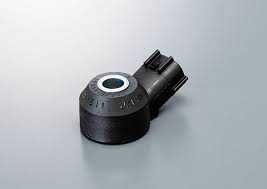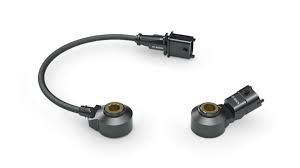What Does A Knock Sensor Do On A Vehicle – 2024
Have you ever wondered what that little device in your engine is and does? Well, that’s the knock sensor. It plays an important role in keeping your engine running. In this article, we’ll explain what a knock sensor is, how it works, and why it’s important for your vehicle. We will discuss common symptoms, causes, and solutions for bad knock sensors. By the end of this article, you will have a better understanding of the knock sensor and how to maintain it.
What is a Knock Sensor and How Does it Work?
A knock sensor is a small digital tool that detects the sound of knocking or pinging inside the engine. Knocking or pinging is the result of strange combustion in the engine. It may harm the pistons, cylinders, and different additives. Knocking may result from various factors, such as low-octane gas, or wrong spark timing.
The knock sensor that mounted at the engine block or cylinder head. It is near the combustion chamber. It has a piezoelectric detail that converts the sound vibrations into electrical indicators. The knock sensor sends those indicators to the engine manipulation unit (ECU). It then adjusts the spark timing and fuel injection to save you or reduce knocking.
The knock sensor optimizes the engine performance and defends it from damage. It also improves the gasoline financial system. And reduces the emissions of the vehicle. The knock sensor is important for modern-day engines. They use turbochargers, superchargers, or direct injection. These boost the pressure and temperature inside the cylinders.

Symptoms of a Bad Knock Sensor
A terrible knock sensor can pose many issues to your engine and you’re automobile. Here are some of the common signs and symptoms of a faulty sensor:
Check engine mild:
The most clear symptom of an awful knock sensor is the check engine light on your dashboard. The ECU will hit upon a malfunction in the sensor circuit and cause the warning light. You can use an experiment tool to study the trouble codes and verify the difficulty.
A horrific knock sensor can fail to come across or the knocking inside the engine. You might also hear a noisy damn or pinging noise coming from the engine, while you speed up or climb a hill. This way the engine is experiencing extraordinary combustion. It may harm the engine over time.
Decreased acceleration:
Knocking engine:
A horrific knock sensor can also have an effect on the acceleration of your automobile. The ECU may retard the spark timing or lessen the gasoline injection to prevent knocking. Especially to lower the engine electricity and torque. You may also observe that your automobile is slow or hesitant whilst you step at the gasoline pedal.
Loss of strength: An awful knock sensor can also cause a loss of electricity for your vehicle. The ECU might also restrict the raised pressure. Or the air-gasoline ratio to save you knocking, as a way to reduce the engine output and efficiency. You may be aware that your automobile is struggling to reach the favored velocity. The also maintain a constant speed.
Poor fuel economy:
An awful sensor can also affect the gasoline economy of your automobile. The ECU may additionally enrich the gas total or increase the fuel injection. And to prevent knocking, on the way to growth the gas consumption and emissions. You may additionally observe that your vehicle is burning greater fuel than common.

Causes of a Bad Knock Sensor
There are several possible motives why a sensor can fail or malfunction. Here are some of the common reasons for a horrific knock sensor:
Wiring problems: The sensor hooked up to the ECU. Especially by a wiring harness that can get broken, corroded, or unfastened over the years. This can cause a poor or intermittent connection between the sensor and the ECU. It could affect the sign transmission and knock detection. You can take a look at the wiring harness for any signs and symptoms of wear and tear, tear, or corrosion.
Corrosion:
The knock sensor uncovers the warmth and moisture inside the engine. It can cause corrosion on the sensor itself or the connector. This can affect the sensitivity and accuracy of the knock sensor. It may cause fake or ignored knock alerts. You can check the knock sensor and the connector for any signs. Also for symptoms of rust, dirt, or corrosion, smooth or update them if important.
Physical harm:
The knock sensor can also get damaged using affects. It includes avenue particles, engine vibrations, or unsuitable setups. This can cause cracks, breaks, or dents on the sensor. The piezoelectric detail can affect the sound detection and the sign generation. You can test the knock sensor for any signs of damage, and replace it if important.
Incorrect installation:
The knock sensor can also malfunction if it’s far set up or within the wrong place. The sensor desires to hook up and at the engine, with the correct torque and orientation. If the sensor unfasten misaligned, or too far from the combustion chamber. It could affect the knock detection and the signal transmission. You can take a look at the sensor setup . It ensures it’s miles accomplished and according to the producer’s specifications.
How to Test and Replace a Knock Sensor
If you suspect that your sensor is terrible, you may test and update it yourself. Or take your car to a professional mechanic. Here are the steps and gear wished to check and update a knock sensor:
Tools: You will want a experiment tool, a multimeter, a ratchet, a socket, and a brand new sensor.
Locate the knock sensor:
The sensor is generally positioned on the engine block or cylinder head. This is close to the spark plugs or the consumption manifold. You can talk to your owner’s manual or a restore guide to find the exact place of the sensor in your vehicle. You may want to dispose of a few additives, consisting of the air intake. Especially to get admission to the knock sensor.
Test the knock sensor: You can test the sensor through the use of a scan device or a multimeter. To use a test device, you want to connect it to the OBD-II port under your dashboard and turn on the ignition. You can then read the problem codes and the live statistics from the ECU. You can look for codes associated with the sensor circuit. Inclusive of P0325, P0326, P0327, P0328, P0330, P0331, P0332, or P0333. You also can look for the sensor voltage and frequency. This have to range in step with the engine pace and cargo. If the codes suggest a malfunction in the sensor circuit. If the voltage or frequency is steady or out of variety, the sensor is awful.
To use a multimeter, you need to disconnect the wiring harness from the sensor. You can then measure the resistance and the voltage of the sensor. You can discuss with your proprietor’s manual. or a repair guide to discover the suitable resistance and voltage values. It is to your sensor. The resistance needs to be in the detailed variety. The voltage have to vary in keeping with the engine speed and cargo. If the resistance is endless or 0. If the voltage is regular or out of range, the knock sensor is horrific.
Replace the sensor: If the sensor is horrific, you could update it with a brand new one. You need to put off the vintage sensor using using a ratchet and a socket. You need to be cautious no longer to damage the sensor or the engine. You can then deploy the brand new sensor and tighten it with the right torque and orientation. You can confer with your proprietor’s manual. Or a restore guide to discover an appropriate torque. You can then reconnect the wiring harness and reassemble any components you removed. You can then clear the hassle codes and test force your car to peer if the problem solved.
Conclusion
The knock sensor is an important tool that monitors. Also controls the engine combustion. It enables to optimize the engine performance and shield it from damage. It additionally improves the gas economy and reduces the emissions of the vehicle. A bad sensor can cause various issues for your engine and your vehicle. It is together with the test engine mild. knocking engine, reduced acceleration, lack of electricity, and a terrible fuel economic system. A terrible sensor can be due to wiring issues, corrosion, physical damage, or wrong setup. You can check and update a terrible sensor by using a scan tool. a multimeter, a ratchet, a socket, and a new sensor.
We hope this newsletter has helped you to apprehend what a sensor does on a vehicle and how to attend to it. If you have got any comments or questions about the sensor. please feel unfastened to leave a remark beneath. We would like to pay attention from you. Thank you for studying and happy driving!
